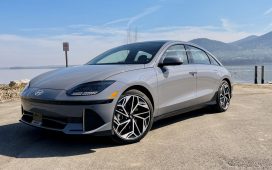Tesla is in trouble with the federal government. Again.
A newly discovered version of Autopilot that allows drivers to operate the advanced driver-assist feature without applying any torque to the steering wheel — a long sought-after feature by Tesla drivers and one used by several other automakers as well — has caught the attention of the National Highway Traffic Safety Administration.
In a July 26th letter (first reported by Bloomberg), NHTSA ordered Tesla to respond to a list of questions about the feature or face an escalating series of fines. The company was ordered to respond by August 25th; it’s unclear whether Tesla complied.
NHTSA ordered Tesla to respond to a list of questions about the feature or face an escalating series of fines
In the letter, NHTSA says it is concerned that any feature that allows drivers to remove their hands from the steering wheel without adequate driver monitoring could prove to be a safety risk.
NHTSA is concerned that this feature was introduced to consumer vehicles and, now that the existence of this feature is known to the public, more drivers may attempt to activate it. The resulting relaxation of controls designed to ensure that the driver remain engaged in the dynamic driving task could lead to greater driver inattention and failure of the driver to properly supervise Autopilot.
The letter was filed in the same docket as NHTSA’s two-year investigation into over a dozen incidents involving Tesla vehicles with Autopilot that crashed into stationary emergency vehicles. That investigation is expected to wrap up relatively soon. Regulators are also investigating issues with Tesla’s seatbelts, steering wheels, and “phantom braking” triggered by the driver assist.
Tesla’s handbook for drivers warns them to keep their hands on the steering wheel while using driver-assist features like Autopilot and Full Self-Driving. If drivers take their hands off the wheel for too long, a series of audio alerts begin to chime — annoying many Tesla owners. They have urged Tesla CEO Elon Musk to follow other automakers in introducing a truly hands-free system, like Ford’s BlueCruise or General Motors’ Super Cruise.
Those systems rely on a robust driver monitoring system that includes cameras and other sensors to ensure drivers keep their eyes on the road. And they are only available to use on certain roads, like divided highways. Tesla allows its customers to use Full Self-Driving (FSD), for example, on local roads, but still requires their hands to be on the steering wheel.
Earlier this year, a hacker discovered a version of FSD that doesn’t require the driver to apply force to the steering wheel while using it. The hacker called the version “Elon Mode” after Musk has shown himself using a version of FSD that also appears to be hands-free. It’s unclear whether NHTSA is referring to this version of FSD in its letter to Tesla.











